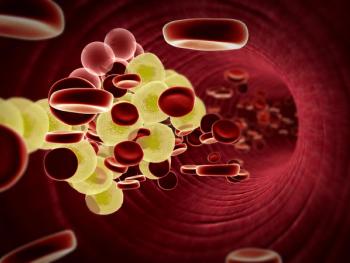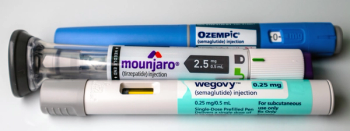
Majority of Drug Revenue Not Going to Pharmaceutical Companies
Findings suggest that a majority of profits from prescription drug sales are going to supply chain entities and discounts.
A new study finds that pharmaceutical companies may not be retaining a majority of profits accrued from prescription drug sales.
In a study conducted by Berkeley Research Group, the investigators found that pharmaceutical companies only realize 39% of initial gross drug expenditures.
Prescription drug spending has skyrocketed in the last few years, which has caused many stakeholders to demand increased pricing transparency. Pricing scandals, such as the recent outrage over
Certain measurements of drug costs do not show the whole picture, and can lead to an inaccurate picture of the gross spend by the customer, and an overstatement of the profits made by manufacturers, according to the study.
Although the chain of payment can be complicated, it can be summed up by 3 transactions: initial gross spending on the drugs by patients and insurers, discounts, and rebates/fees paid by the manufacturer. This multi-step chain of wholesalers, pharmacies, and other entities can create confusion about drug costs.
Wholesalers purchase the drugs that are then sold to pharmacies and healthcare providers, and
Due to the lengthy supply chain, prices inflate down the line, which leads to patients paying higher prices for their prescription drugs. However, manufacturers do provide rebates and discounts to certain patients, health plans, or PBMs, which results in lower costs.
Additionally, manufacturers are required to provide significant discounts to government health plans and other government institutions, such as Medicare or Medicaid. This acts to reduce net spending by the government, but also reduces profits realized by pharmaceutical companies, according to the study.
In the study, the investigators considered rebates, discounts, and fees paid, to show a more complex picture of pharmaceutical manufacturers’ profits and spending.
The researchers found that branded manufacturers only realize 39% of initial gross drug expenditures, and 47% of net drug expenditures, according to the study. The other 42% of initial expenditures is realized by non-manufacturer stakeholders, such as generic manufacturers, supply chain entities, rebates, fees, and discounts.
In 2015, net expenditures were estimated to be $469 billion, but brand manufacturers only received 47%, or $219 billion, of this amount. Other manufacturers of branded drugs realized 23%, while supply chain entities realized 27%, and 4% was used on fees and rebates, according to the study.
The investigators also found that profits decreased for manufacturers and increased for non-manufacturers over time. The manufacturers’ profits decreased from 41% in 2013 to 39% in 2015, with non-manufacturer entities realizing between 38% and 42%, respectively.
Although prescription drug prices may be increasing, these findings suggest that pharmaceutical companies may not be responsible for these increases. Due to the complex nature of the supply chain, many individuals may receive an unclear or misguided picture of who is raising drug costs.
Informed discussion about spending and affordability should include a better understanding of those entities in the supply chain who may be contributing to rising drug costs, the study concluded.
“The BRG [Berkeley Research Group] study is the first to show what happens when the list price of a medicine meets the forces of private market negotiation, costs associated with a complex supply chain and mandated government discounts in Medicaid, the VA and the 340B program,” said Stephen J. Ubl, president and chief executive officer of the Pharmaceutical Research and Manufacturers of America, the organization that commissioned the study.
Newsletter
Stay informed on drug updates, treatment guidelines, and pharmacy practice trends—subscribe to Pharmacy Times for weekly clinical insights.

















































































































































































































